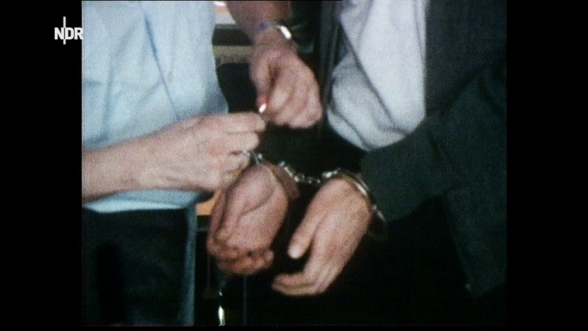Workspace - Unterrichtsmaterialien
Thematic Archive Walk
Migration and Media Ethics
Pfade und Programme
The Fifth Wall - Thematic walk through the archive on:
MIGRATION AND MEDIA ETHICS
Developed by Dr. Rubaica Jaliwala
The digital archive, The Fifth Wall, is a treasure trove of material comprising films, reportages, texts, letters, photos, which is a tremendous resource to discuss themes of interculturality and diversity, gender, racism and migration and to explore strategies to transform hierarchies.
This thematic walk on MIGRATION AND MEDIA ETHICS is just one example of how the archive can be used for educational purposes. Accordingly, the sessions, process and flow of the thematic walk can be adapted to different settings, contexts and target groups. The programme below can be made interdisciplinary by presenting the archival material within a theoretical framework and using an interactive training methodology.
I. Introduction
1. Trainer introduction
2. Explain the flow and process of the session
3. Brief introduction to the theme
II. The First Woman Migrant in the newsroom
1. Film excerpt: SO LONG AS THERE ARE TEARS (1972): 00:00 - 2:08 (2:08 mins)
Sundaram directed this film on the 25th anniversary of India’s independence. Using archival footage, the film analyses Indian history since independence and questions the progress made over the past 25 years.
Discussion questions:
- What was this excerpt about?
- Did you notice anything in particular about the excerpt?
- Why do you think I have shown it?
- Why do you think Navina Sundaram has positioned herself as an Indian in this documentary?
2. Commentary: I AM A NEHRU CHILD, 2004 (2:34 mins)
Discussion questions:
- What does this commentary tell you?
- Why does one need to look the part to prove authenticity?
What are western media and audiences are looking for?
- Is it the same with media in India or media in general?
3. Commentary: DIVERSITY IN THE MEDIA, 2018 (3 mins)
Discussion questions:
- If you compare the two commentaries - “I am a Nehru child” and “Diversity in the media”, what catches your attention?
- What purposes are migrants meant to serve?
- Is this the case just for Germany or the West or also for India and the other countries?
- How can diversity benefit the media and its audiences?
4. Commentary: LIVING WITH CONTRADICTIONS, 2004 (00:46)
This can be shown here to sum up and explain how a society can benefit from diversity, how different people can reveal a different way of looking at a situation, which can benefit all, particularly since no society is homogeneous today and living with diversity is a given.
III. Media Ethics
This section is meant to depict how easily the scales are tipped against a migrant woman, how gender and racism are likely to have played a role in the following. The discussion should focus on media ethics on the one hand and racism on the other. Would it have been the same reaction had a German done exactly what Navina Sundaram did?
1. Film: THE CASE OF KEMAL ALTUN, 1983, (09:08 mins)
This reportage consists of two reports put together in reverse order of their production. One report is about conveying the news of death of Kemal Altun to his sister on camera and recording her reaction. The second part provides background on the Altun case.
Discussion questions:
- What did you think of the reportage?
- What disturbed you and why?
- How do you think this reportage was received by German audiences?
-What role do journalistic ethics play here? What should have or should not have happened?
2. Commentary: BACKGROUND REPORT KEMAL ALTUN, 2018 (14:28 mins)
Discussion questions:
- What do you think about Navina Sundaram’s handling of the situation, filming and broadcasting the reaction of Kemal Altun’s sister?
- Have you seen images of children from the African continent with an overlay asking for donations on TV?
- How do you feel about such images? Do you think they are okay as they serve a purpose or do such images disturb you?
- How are such issues covered by the media in your country?
- Where do we draw the ethical line?
- Do you have similar examples?
- For example, take a look at another commentary by Navina:
3. Commentary: INTERNATIONALISM, 2018 (2:20 mins)
Discussion questions:
- Did you pick up any key words in this commentary? (Solidarity, perspective taking)
- How is this commentary related to media ethics?
- How can we strive to stay ethical in our media practices?
4. End with Commentary: I TOOK A STAND, 2018 (2:02 mins)